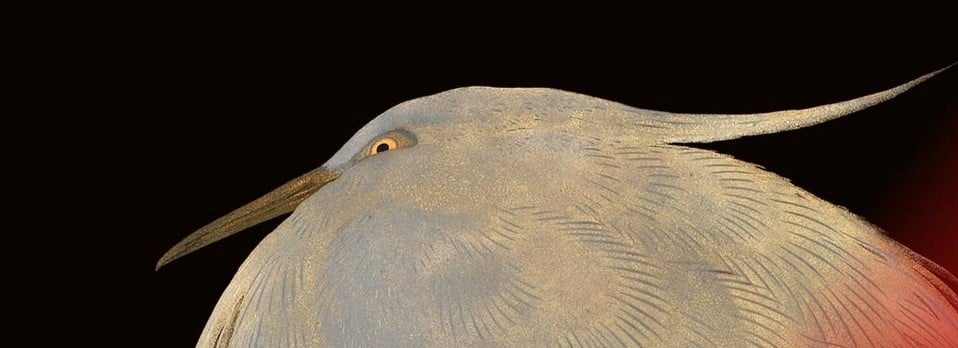
12 Symbols in Japanese Art
Japanese art is replete with symbolism. Distinctive forms such as cranes, chrysanthemums or pines appear across works of all media, from woodblock prints to lacquer boxes.
Many of these motifs are drawn from the natural world, celebrating flora and fauna distinctive to Japan. Others are mythical creatures with powerful connotations in East Asian mythology. More than mere aesthetic devices, these symbols have poetic and philosophical associations which have been refined and enjoyed for centuries.
Below are 12 of the most distinctive symbols found on Japanese works in the Royal Collection.
Cherry Blossom
Among the most recognisable symbols in Japanese art is cherry blossom, a symbol of the nation. Each year, revellers gather beneath the trees to celebrate the dramatic clouds of pink. The blooms’ sudden fading is used in poetry and art as a sign of life’s fragility. On this vase, the petals seem to dissolve into the cream glaze, indicating the fleeting nature of the season.
Carp
Carp swimming against the stream are a centuries-old emblem of samurai determination. The fish appears frequently on decorations in May, when Japanese families traditionally celebrated their sons and prayed for them to become loyal warriors. Today, colourful carp streamers are flown across Japan to mark Children’s Day.
Peacock
Peacocks are believed to play in the garden paradise of Pure Land Buddhism. In this embroidery, peonies grow nearby – a suitable flower offering for Buddha. The resplendent bird also represents royalty and beauty.
Dragon
A dragon in a stormy sky is has long been a popular subject among Japanese ink-painters. The motif has its roots in ancient Chinese philosophy, where dragons were believed to control thunder and rain.
Mount Fuji
Japan’s highest mountain has been revered since ancient times and is a sacred site in both Buddhism and Shintō.
The iconic peak has appeared in art since the eleventh century. Most famously, the artist Katsushika Hokusai produced 36 views of Fuji c.1829–33. In this woodcut print, the artist Yoshida Hiroshi captures the mountain at dawn using subtle gradations of colour.
Chrysanthemum
Autumn-blooming chrysanthemums are celebrated throughout Japan in September. The flower blooms for an extended period each year and is associated with purity and long life.
One poet writing c.961 AD declared, ‘Every year with the ninth month / The chrysanthemum blooms again / Autumn must understand eternity.’
Since the 13th century, the 16-petalled chrysanthemum has also been an emblem of the Japanese emperor. Chrysanthemums appear on many of the imperial gifts in the Royal Collection, including this folding fan.
Turtle
One mythical Japanese turtle is said to have lived for 10,000 years – so long that a trail of algae began to grow on its back. In Europe, this trailing weed was often mistaken for fire, giving rise to the name ‘flaming tortoise’ for these creatures. The turtle is a playful emblem of longevity.
Bamboo
Hardy stems of bamboo bend in the wind but don’t break, making them a potent symbol of strength and resilience. The plant’s fast growth is also associated with prosperity, and the straight shoots are used in poetry as a sign of fidelity.
Pine
The evergreen pine has long roots and bright needles representing faithfulness and strength.
In ancient times, tying a ribbon to a pine branch was a prayer for safety and long life.
Rabbit/Hare
In Japanese mythology, rabbits help prepare the elixir of life. The theme of longevity is reinforced on this incense burner by the fungi on the rocks, which is said to grow on Mount Hōrai, the mystical land of the Immortals. 2022 is the Year of the Rabbit, the fourth year in the East Asian zodiac calendar.
Crane
The crane is among the most popular motifs in Japanese art. Said to live for a thousand years, the wintry bird represents good fortune.
Cranes are also thought to mate for life, and appear frequently in poetry and art relating to weddings, romance and lovesickness.
Phoenix
This mythical bird-like creature combines elements of several different animals, birds and fish. It is said to appear only at times of enlightened rule, making it a symbol of peace and stability. The association with good government led the phoenix’s use on the emperor’s ceremonial robes.







